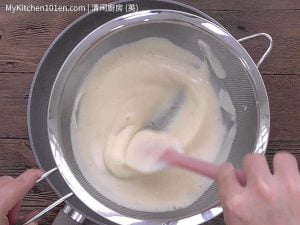

Such dampened and redried WLS should be sorted out and sold as lower-grade products. Although producers and sellers usually will redry the seeds and recover the appearance by some physical or/and chemical processing, the taste and quality of dampened WLS can no longer be recovered.

Because the processing of fresh WLS can be nonuniform for all seeds in a batch, some WLS cannot be fully dried. Dampening can also occur during processing. Unfortunately, lotus is mainly cultivated in a humid climate and dried WLS tends to absorb moisture in the air. Moreover, if the dried WLS has been contacted with moisture for a long time, the quality and taste of WLS can be significantly degraded. The quality of WLS is determined mainly by the origin, variety, ripeness, size of seeds, and the processing. White lotus seeds (WLS) are bare kernels and are much more usually used than red lotus seeds. Honglianzi is harvested when the seed head of the lotus is ripe or nearly ripe and Bailianzi is harvested when the seed head is still fully green, but with almost fully developed seeds. There are two types of lotus seeds in China, namely, red (Honglianzi) and white (Bailianzi). Pharmacological experiments indicate that lotus seeds have strong antipyretic, cooling, astringent, demulcent, antioxidant properties, as well as scavenging effects on reactive nitrogen species.
#LOTUS SEED PASTE VS WHITE LOTUS SEED PASTE SKIN#
Lotus seeds have also been used to treat tissue inflammation, cancer, diuretics, and some skin diseases in Ayurveda and traditional Chinese medicines. Recent investigations have demonstrated that lotus seeds contain many nutritional and bioactive substances, such as phospholipids, proteins, amino acids, vitamins, sugars, essential minerals, alkaloids, and flavonoids. Lotus seed (Lianzi in Chinese) is widely consumed as a valuable functional food in China for soups, congee, pastries, and other dishes. The most important reason for its current widespread planting is the consumption of lotus roots and seeds. Virtually all parts of lotus, such as its seeds, rhizomes, leaves, flowers, and stamens, are consumed worldwide. Lotus has been cultivated for thousands of years in China and nowadays it is widely grown and common in India, Thailand, South Korea, Japan, Australia, and the US. Lotus seed intake helps in the generation of Acetylcholine which is required for the purpose of neurotransmission.Lotus ( Nelumbo nucifera Gaertn.) is an aquatic perennial from family Nelumbonaceae. The thiamine content in lotus seeds are helpful in sustaining the healthy cognitive functions of the nerves. It is of a great help in case there are muscle contractions, which can lead to cramps. It is helpful in flushing out excess water and sodium from the body. The potassium content is a great advantage for heart as it reduces the risk of heat stroke and hypertension. It helps to eliminate all the spleen from the body and keeps it clean from the unnecessary cholesterol, therefore, maintaining the body’s cholesterol level. These are high in fiber, which helps maintaining the excretory tract in proper order. The remaining is made up of water, potassium, sodium, phosphorus and calcium. 100 grams of lotus seed will give you 350 calories, which means about 65 grams of carbs, 18 grams protein, and 1.9 to 2.5 grams of fat. They are an extremely good source of manganese, potassium, magnesium, thiamin, protein and phosphorus. Lotus seeds are low in cholesterol, saturated fat and sodium.


 0 kommentar(er)
0 kommentar(er)
